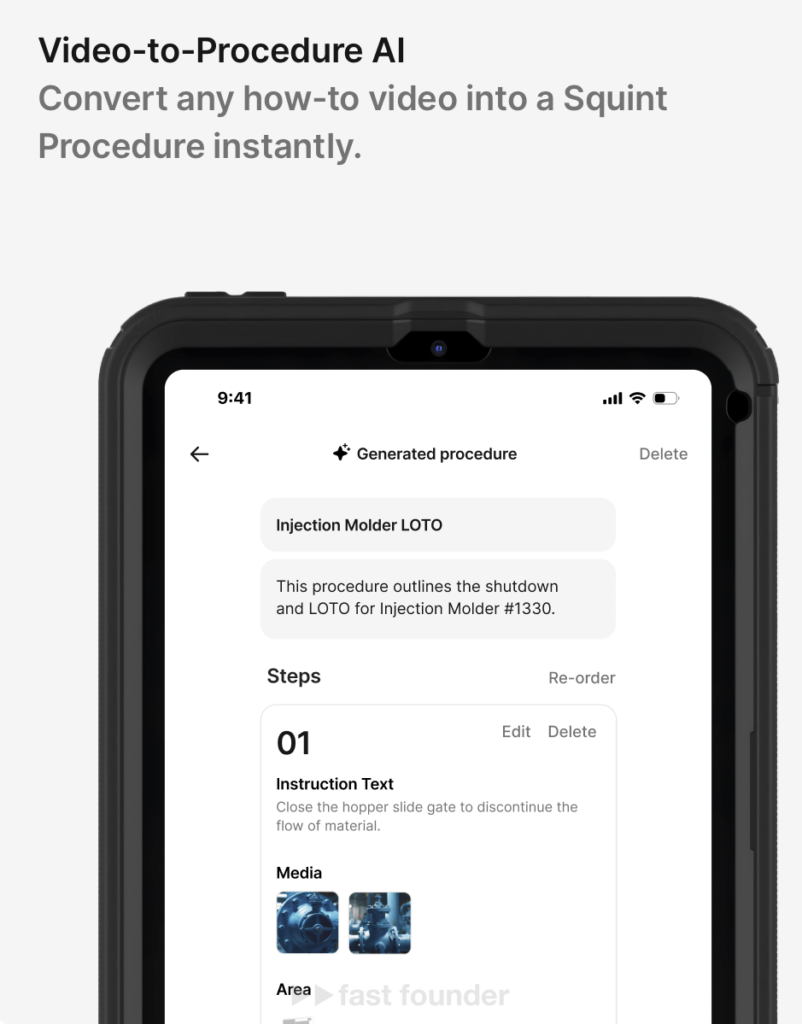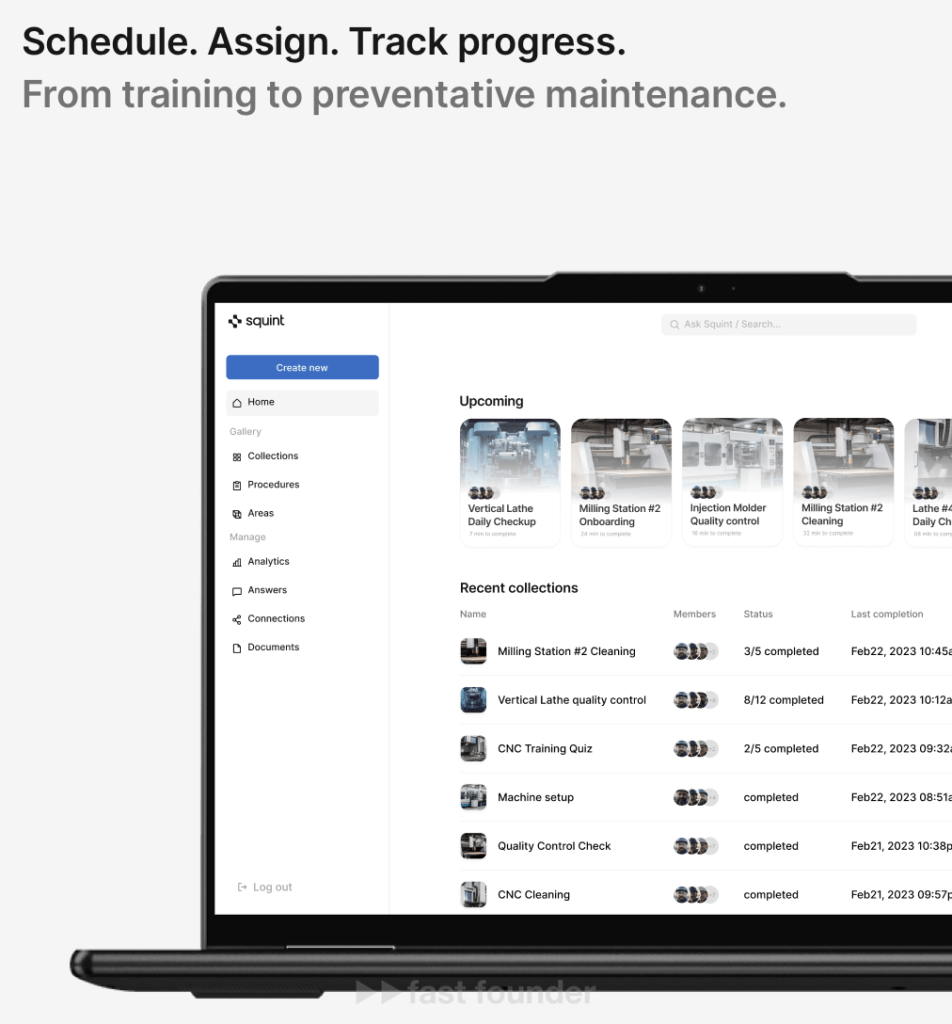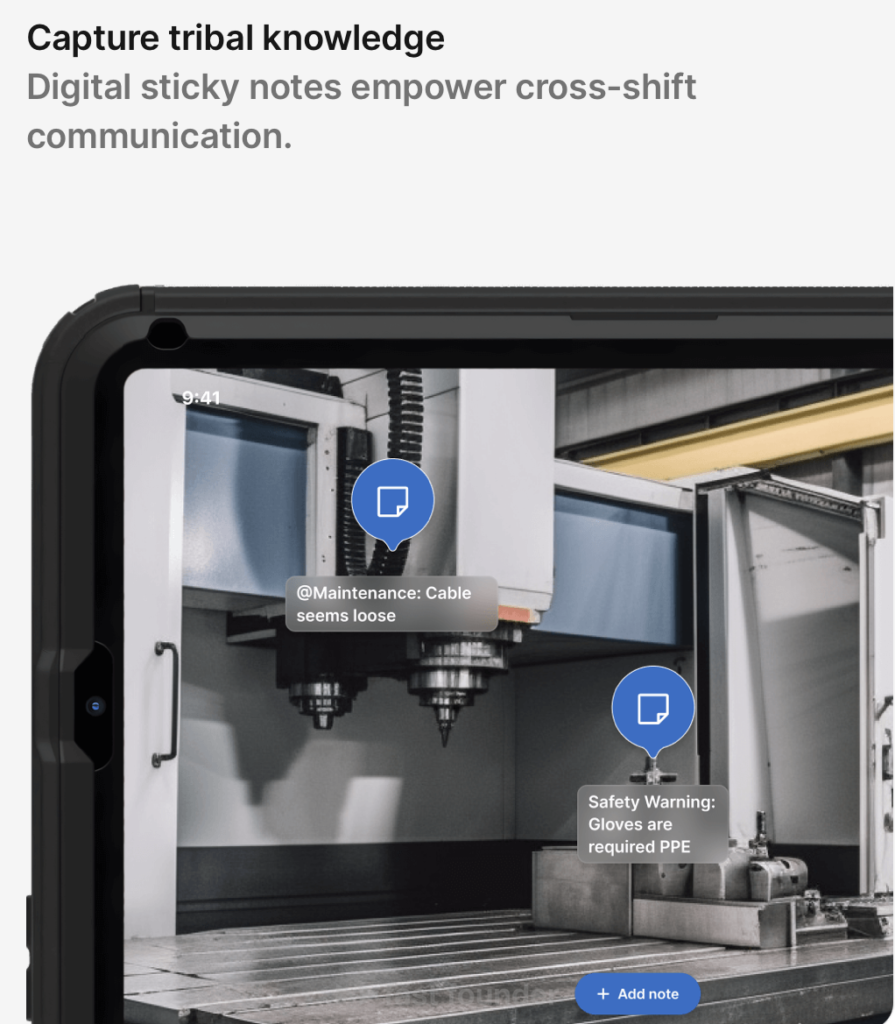Who to Teach? “Better” I’m not sure, but “more profitable” would be those in greater numbers 😉 And it’s not programmers. There are “only” 30 million programmers, but 700 million industrial workers! Moreover, they work with complex equipment, which is not so easy to master and very expensive to damage. However, standard educational platforms won’t suit them. Factories and plants are willing to pay for something like this.
Project Essence

Squint promises to turn any industrial worker into an equipment operation expert, provided they can handle a smartphone and point its camera at a machine 😉

As soon as a machine comes into the camera’s view, the Squint app can provide a list of video instructions on how to operate that machine, quickly identifying it by appearance and rapidly searching for related video instructions.
If a worker simply needs to know “which button to press to get it started,” the app will use an on-screen arrow to indicate the necessary “button” and provide instructions on how to press or turn it.
As workers still need to remember some things themselves, the app can periodically show them pictures of machines or parts, asking questions like “how to turn it on” or “what is this thing”.

The real charm of Squint lies in the fact that creating a video instruction requires only recording a video with an expert performing the needed procedure and uploading it to the platform. After that, the platform’s AI machine will break down the video into a sequence of steps and add their textual description.
During the processing of uploaded video instructions, the AI machine also creates a database of machine “buttons” with descriptions of actions that can be performed with them. This database is used to answer workers’ queries about specific actions like “how to turn on”, “where to insert”, “where to look”, etc.

Inside the app, there’s also an AI assistant to whom workers can ask questions about equipment operation or troubleshooting, such as “how to calibrate this machine” or “what to do if this machine won’t turn on”. The AI assistant’s responses are also accompanied by relevant video instructions, as it finds answers in these videos.

Equipment functions properly when it’s well-maintained. In the app, you can assign a list of preventive works for each machine, specifying the frequency of each task and equipping each with a video instruction.
Then, at the right time, the relevant worker will receive a reminder about what needs to be done with which machine, along with instructions on how to do it. After completing the maintenance procedure, the worker checks it off, and the management sees a list of all preventive works along with notes on their completion or delay.

The app can also be used as a service for notes, with notes being attached to machines or their specific buttons. Thus, safety engineers can leave messages for workers, workers for service teams about their suspicions of malfunction, and workers of one shift for those working on the same machine in another shift, and so on.

Squint has already acquired major manufacturers like Hershey, Volvo, Siemens, Colgate-Palmolive, Michelin, and others as its clients.
Squint is developing vigorously. In March 2022, it raised its first $2.5 million in investments, in April 2023 another $3.5 million, and now it has already secured $13 million. The last two rounds were led by the well-known venture capital firm Sequoia Capital.
Interesting Points
It’s good that the basic concept of today’s startup isn’t unique 😉 That means it’s correct and in demand.

Squint uses a similar mechanism to the startup DeepHow, which I wrote about in the spring. Its platform also transforms videos recorded by experts into video instructions that industrial workers can use during equipment operation and maintenance. This startup raised $37.1 million in investments.

Squint’s feature is its use of “augmented reality” (AR), allowing workers to simply point the camera at a machine to get the necessary instruction or see the required “button”.
However, startups like Kognitiv Spark, which I wrote about last year, are also using augmented and virtual reality to support and train industrial workers. It raised $3.9 million in investments.

The principle of providing workers with necessary information right at the workplace is also used by the startup Zaptic, which I also wrote about in the spring. They don’t heavily rely on AI capabilities for creating and searching instructions, but still, they raised $16 million in investments.

The most interesting aspect of all the above-mentioned startups is the size of their target market. There are 700 million industrial workers worldwide!

This number can be compared to the number of programmers, a profession that everyone loves to teach 😉 Well, there aren’t even 30 million programmers worldwide.
One might think that there’s not much to teach industrial workers compared to programmers. But that’s not true, as industrial equipment has become quite complex. It’s not easy to master, and too costly to break. Hence, the issue of proper equipment operation is not only a matter of increasing labor productivity but also a desire to reduce losses due to equipment downtime from breakdowns and expensive repairs.

At the same time, the problem of finding qualified industrial workers, capable of operating complex machinery, continues to complicate. It’s becoming increasingly difficult for factories and plants to find workers, mainly due to a lack of required competencies.

New workers need to be found not only because factories and plants are expanding, but also because the turnover rate in manufacturing is almost 40%, meaning almost half of all workers leave each year, requiring the hiring of new ones and quickly training them to operate that complex equipment.
It’s impossible to fully and quickly train them. Therefore, it’s necessary to train them somehow but provide them with digital crutches that help them continue learning to operate and maintain equipment in the course of real work. These digital crutches are platforms like Squint, Deephow, Zaptic, and Kognitiv Spark, mentioned today.
Where to run
The market for industrial workers is so vast that even a dozen similar platforms wouldn’t be enough to cover it quickly.
Therefore, it’s not even necessary to invent anything, just create and learn to sell such platforms – that’s the main direction to go.
For example, one can choose today’s Squint as a model, which combines the simplicity of creating video instructions and a user-friendly interface with augmented reality.
